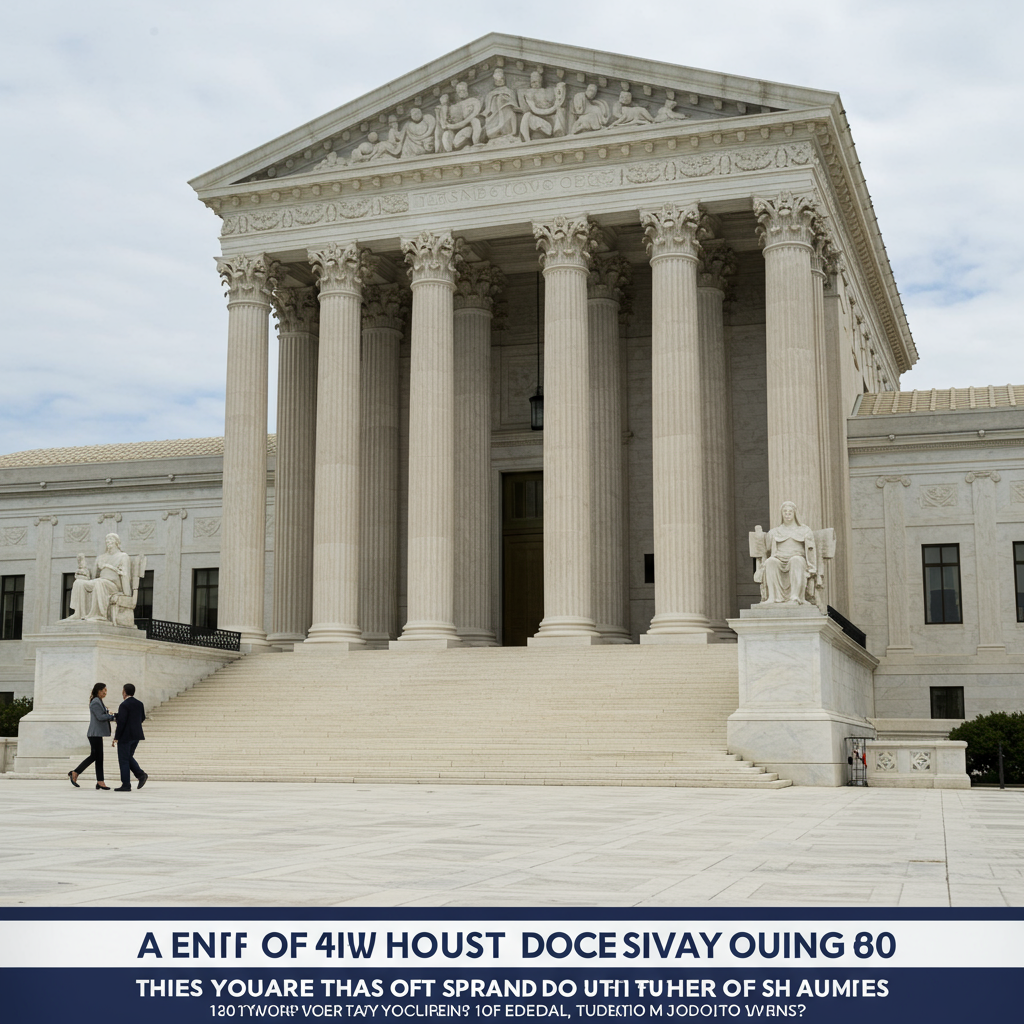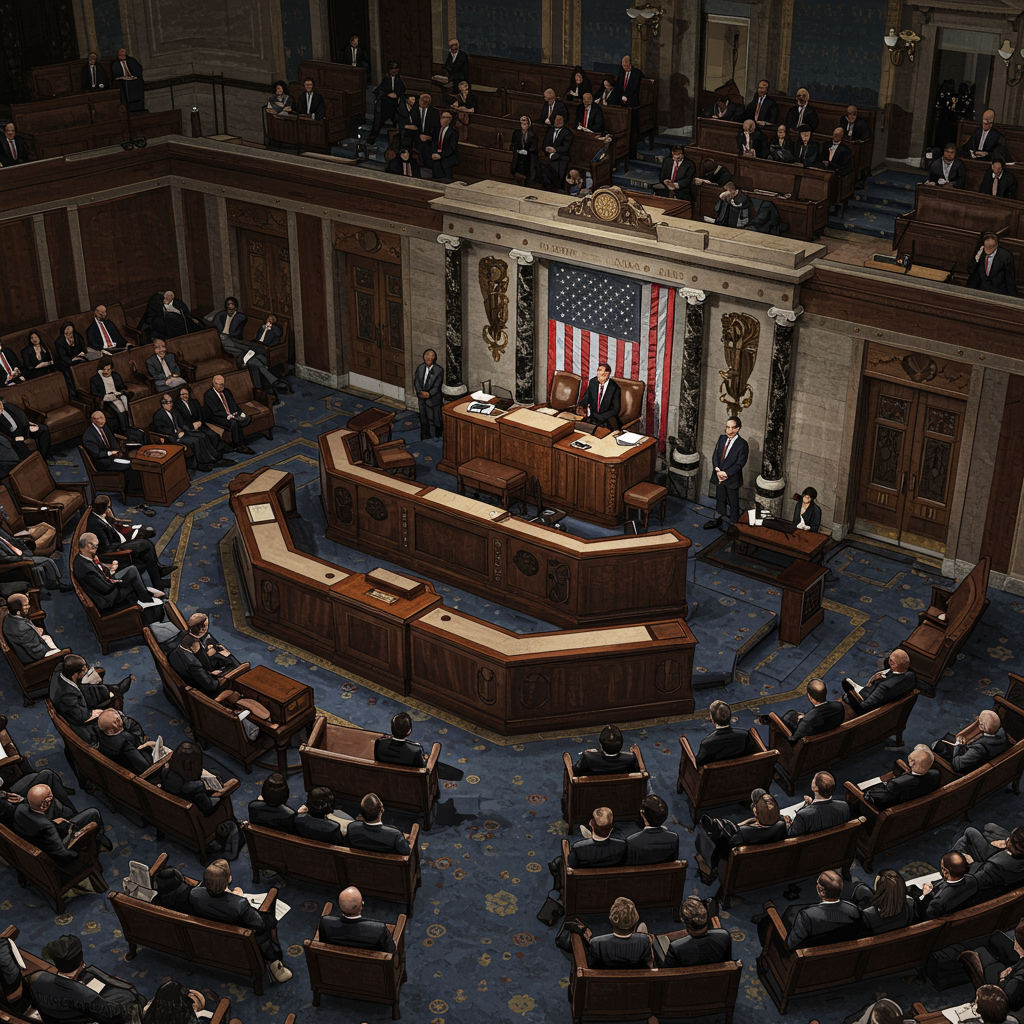Supreme Court Limits Universal Injunctions: A Shift in Judicial Power
In a significant ruling handed down on June 27, 2025, the U.S. Supreme Court sharply limited the power of federal judges to issue universal, or nationwide, injunctions. This decision marks a major shift in how federal policies, particularly executive actions, can be challenged in court and is seen as a victory for the executive branch in its ability to implement its agenda without broad, immediate judicial blocks.
The ruling stemmed from legal challenges against an executive order issued by President Trump concerning the birthright citizenship of children born in the U.S. to parents who entered the country unlawfully or were present on temporary visas. While the underlying case involved the constitutionality of the birthright citizenship policy itself – a stance widely considered by legal scholars to contradict the 14th Amendment and long-standing precedent – the Supreme Court’s 6-3 decision did not address the merits of that issue. Instead, the conservative majority focused specifically on the scope of the injunctions issued by lower courts that had blocked the policy nationwide.
Justice Amy Coney Barrett, writing for the majority, stated that “Universal injunctions likely exceed the equitable authority that Congress has given to federal courts.” The Court determined that federal courts are primarily limited to resolving “cases and controversies” affecting only the specific parties involved in a lawsuit. Granting injunctions that apply across the entire nation against everyone, regardless of whether they are plaintiffs, goes beyond this traditional judicial role and lacks historical basis. Barrett noted that remedies akin to universal injunctions were “conspicuously nonexistent” for the first century or more of the nation’s history.
What is a Universal Injunction?
A universal injunction is a court order that prevents the government from enforcing a law, regulation, or policy against anyone, anywhere in the country. Unlike standard injunctions, which typically provide relief only to the individuals or groups who filed the lawsuit, a universal injunction controls how the federal government acts toward the entire nation.
Legal experts characterize universal injunctions as a “recent innovation” that has seen a “meteoric rise” over the past decade. This increase has coincided with a greater reliance on executive orders by recent administrations across the political spectrum. Historically, such broad relief was rare, and a 1937 law even required three-judge panels for cases challenging federal laws, with direct appeals to the Supreme Court, partly to limit the power of individual judges and streamline appeals. That law was scaled back in 1976. Justices like Clarence Thomas, Neil Gorsuch, and Samuel Alito have previously criticized universal injunctions as “legally and historically dubious.”
The Supreme Court’s Decision and Its Immediate Impact
The Court’s ruling significantly curtails the ability of lone federal judges to issue nationwide blocks on executive actions and other federal policies. It granted the government’s request for a partial stay, limiting the injunctions in the birthright citizenship case to apply “only to the extent that the injunctions are broader than necessary to provide complete relief” to the plaintiffs who brought the lawsuits. This effectively means the policy could potentially proceed against those not party to the cases, although the Court included a 30-day period before the order could take full effect nationwide, allowing time for new legal challenges.
For the Trump administration, the decision was hailed as a “monumental victory for the Constitution, the separation of powers and the rule of law.” President Trump described it as a “GIANT WIN” that would prevent judges from a “colossal abuse of power.” Attorney General Pam Bondi echoed this sentiment, suggesting the ruling reflected what voters desired.
However, the decision drew sharp criticism from the dissenting justices. Justice Sonia Sotomayor, writing for the three liberal justices, argued that the majority had “abdicat[ed] their role in protecting the rule of law” and made a “solemn mockery” of the Constitution. She contended that the ruling puts constitutional rights at risk for individuals who are not direct parties to a lawsuit and accused the government of “gamesmanship” for seeking to limit the injunctions while avoiding a direct ruling on the legality of the birthright citizenship policy itself, which she asserted is “patent[ly] unlawfulness” under the 14th Amendment. Sotomayor called the decision an “unprecedented assault on the court system,” arguing that universal injunctions are a “necessary tool” to stop harmful policies affecting large groups and provide “complete justice,” and that the ruling “kneecaps the Judiciary’s authority.”
What Happens Next in Federal Litigation?
Legal experts anticipate that this ruling will dramatically alter the landscape of litigation against the federal government. With universal injunctions effectively removed as the default remedy, plaintiffs will likely shift their strategies to achieve broad relief through other procedural mechanisms.
The “central front” in challenging federal actions is expected to move towards class action lawsuits. By certifying a nationwide class, plaintiffs can seek an injunction that protects a large group of similarly situated individuals, potentially achieving a result similar in scope to a universal injunction, though through a different legal pathway governed by Federal Rule of Civil Procedure 23. Legal scholars predict that Rule 23 will become the “next major battleground” in these types of disputes.
In addition to class actions, we are likely to see increased reliance on:
State plaintiff suits: Where states sue the federal government to protect their own interests or those of their residents.
Organizational standing: Allowing groups to sue if they are directly harmed by a policy.
- Associational standing: Permitting organizations to sue on behalf of their members who meet certain conditions.
- www.npr.org
- www.cbsnews.com
- www.aljazeera.com
- www.yahoo.com
- www.npr.org
While the Supreme Court’s decision significantly narrows one powerful tool, plaintiffs possess other procedural avenues that can still be utilized to obtain “effectively universal relief.” These established mechanisms will likely be the future arenas for challenging federal executive actions.



